Looking for a simple Snowbird guide to birding in Arizona? Look no further! This post covers everything seasonal migrants and winter wanderers – aka Snowbirds – need to know. Why birdwatch, what do you need to get started, when and where can you see birds in southern Arizona from January through to April? You have questions? We have answers!
Disclosure: This post contains affiliate links. If you buy something from one of our affiliates, we receive a small commission at no extra charge to you. Thanks for helping to keep our blog up and running!
Table of Contents
Your Snowbird guide to birding in Arizona
Snowbirds – retirees and winter wanderers seeking winter warmth in southern U.S. states – flock to Arizona’s deserts for escape from the cold and the snow. But they aren’t the only ones enjoying the milder temperatures. Birds also love cactus country and foothills in winter and early spring.
Birding is one of the fastest-growing hobbies in North America. One statistic I’ve read claims that 20% of the US population are birdwatchers. Another stat suggests that more time is spent birdwatching than gardening in Canada – of course, that could have something to do with the climate! Nevertheless, birding is a popular pastime.
For Canadian Snowbirds – or any winter wanderers for that matter – looking to spend time in Arizona birding is a rewarding, inexpensive, and portable hobby to take up.
Why birdwatch?
Watching birds and learning about how many different species there actually are in an area opens up a whole new world of discovery. The more you learn, the more you want to learn.
You can create a life list of all the different species you see – or keep it as simple as enjoying birds that visit your backyard feeder.
It can be a social activity with friends or other birders – or something you do completely on your own. Chances are you will find other birders – experienced and wannabes (like me) – to share the experience.

Birding doesn’t need to cost an arm and a leg. All you really need to get started is a pair of binoculars and a bird field guide for identification. That’s it, that’s all.
You can bird anywhere around the world – even in your own back yard or campsite. The necessary equipment stows easily in any RV, van or trailer.
What do you need to get started?
You need a decent pair of binoculars. They are all you really need to begin birdwatching. Plan on spending $150 to $300 for a decent pair. Look for binos labelled 8×42; these are perfect for beginner birders.
As you get into the sport, you’ll want to pick up at least one bird identification guide, a.k.a. field guide. It will also help if you start to learn a little basic bird identification. I use – and really like – The Sibley Field Guide to Birds of Western North America, but there are many options for field guides. Look around and choose one that works for you.
Look at where the birds are – in a forest, on a pond, in the mountains, in the desert… Are they walking, wading, flying, or sitting in a tree? Are they in flocks or solo? How big are they – bigger or smaller than a robin? What color are they? Do they have any obvious markings?
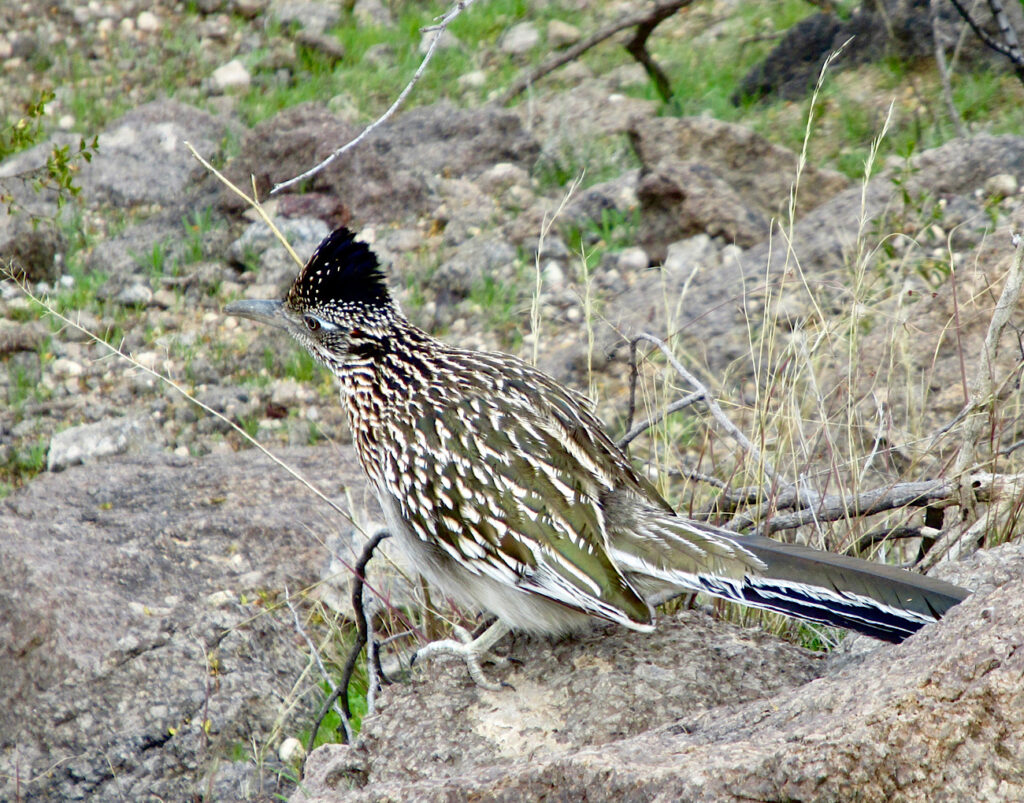
Always look beyond feather colour and take in as many physical details as you can.
- What is the shape of the bill?
- What colour is the bill? How long is it (longer or shorter than the bird’s head)?
- Look at the legs – what colour are they?
- How long is the bird’s tail?
- If the bird is in motion, how does it move through the air – undulating, steady flight, seemingly erratic movements…?
Guided birding!
Now grab your field guide and see if you can find a close match. Personally, I love birding with my friend Claudette. She’s the birder I want to be when I fledge. She can whip off an ID before I can haul out my bird book!
But don’t despair if you don’t have a birding pal. Bird identification has become so much easier with apps such as eBird or Merlin Bird ID. Click on the app and listen for songs. Listen, that’s a rock wren. Take a pic and use the photo ID. Look, that’s a verdin.
Cool, huh?
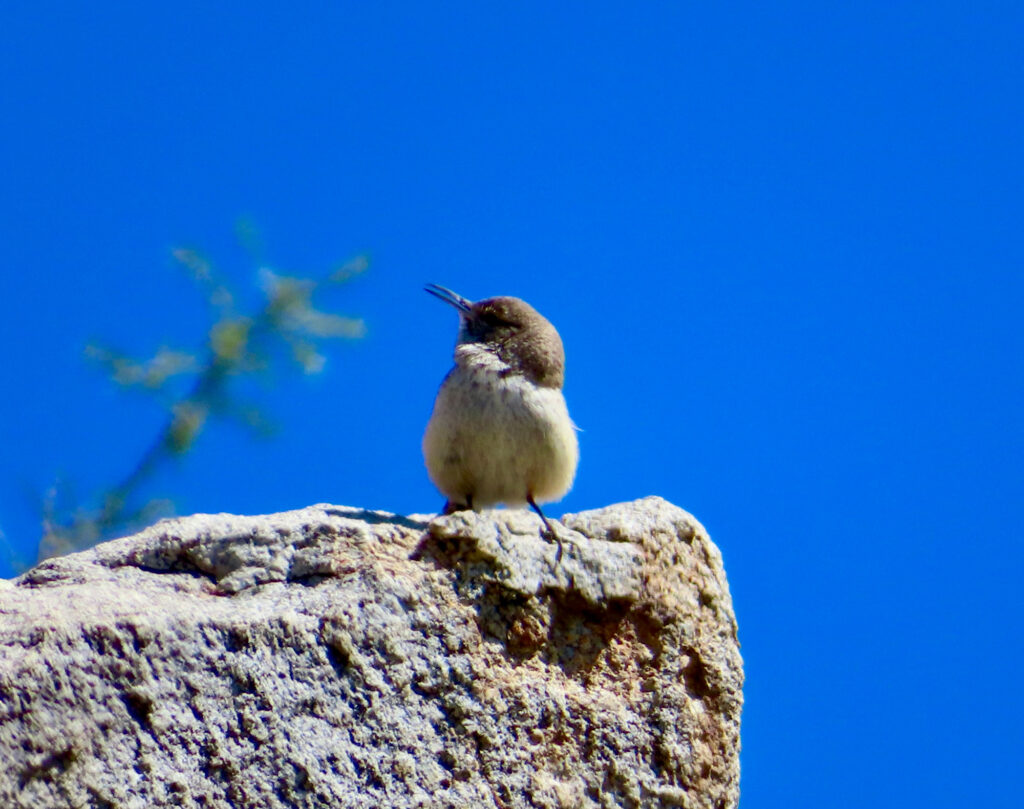
There’s also a step by step bird ID section on the Merlin app – but let’s face it, I’m too impatient and the birds are usually long gone before I get through something that requires that much time. It might explain why I haven’t and may never fully fledge as a “birder” – but it doesn’t mean I can’t enjoy the sport!
These apps are free – you can pay for upgrades but I don’t – simple to use, and can help you identify the birds you see and hear. I have both apps on my phone but tend to fall back on Merlin Bird ID all the time – especially for bird songs.
When and where to see birds?
Okay, so you’ve got the gear and know the basics of what to look for, now when and where do you find the birds?
Do you want the good news or the bad news first?
Let’s get the nasty news out of the way first. Birders are early birds for a reason – that’s when most birds are active. Early morning near water with tree cover nearby – that’s your best bet for seeing birds. Parks – city, regional, state or national – are birding havens.
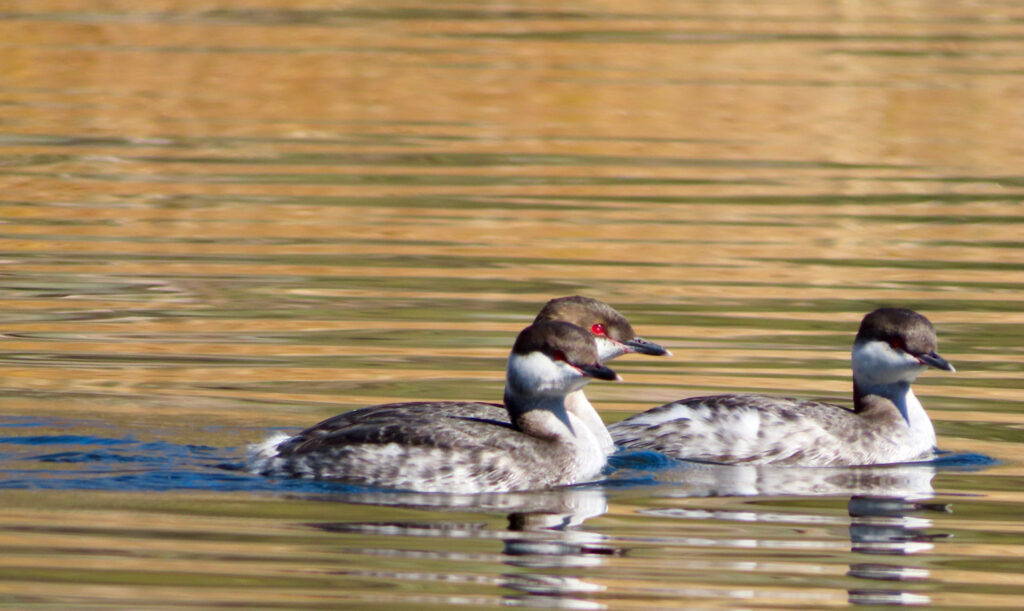
Spring is the ultimate birding season; this is when you will hear the beautiful songs. The good news is that as a beginner birder, identifying any bird call is a boon and birds still communicate with each other year-round.
Spring and fall are the best seasons to watch for migrants – large and obvious flocks of birds heading north in the spring and south in the fall.
You can easily connect with local birding clubs. Many clubs offer outings to birding hotspots. The Audubon Society is an obvious choice. Check out the birding tours offered nearby you, such as Tucson Audubon Society’s listings. Birding groups in your area on Facebook can also be excellent resources for up-to-date sighting info.
Specific Southern Arizona birding resources
In Phoenix, the Riparian Preserve at Gilbert Water Ranch is a birding hotspot. To the east, visit the Boyce Arboretum on your next birding day. To the west, check out the Hassayampa River Preserve.
While in Tucson, be sure to visit Sweetwater Wetlands and/or Agua Caliente Park for some of the best birding in the city.
The Southeastern Arizona Bird Observatory, Friends of the San Pedro River, and Huachuca Audubon Society co-sponsor Sunday morning walks year-round at the Sierra Vista Environmental Operations Park (6799 E. Highway 90 in Sierra Vista). I did this tour one morning and loved it!
Whitewater Draw is renowned for overwintering Sandhill Cranes – thousands of cranes! It is about a 30-minute drive from Tombstone.
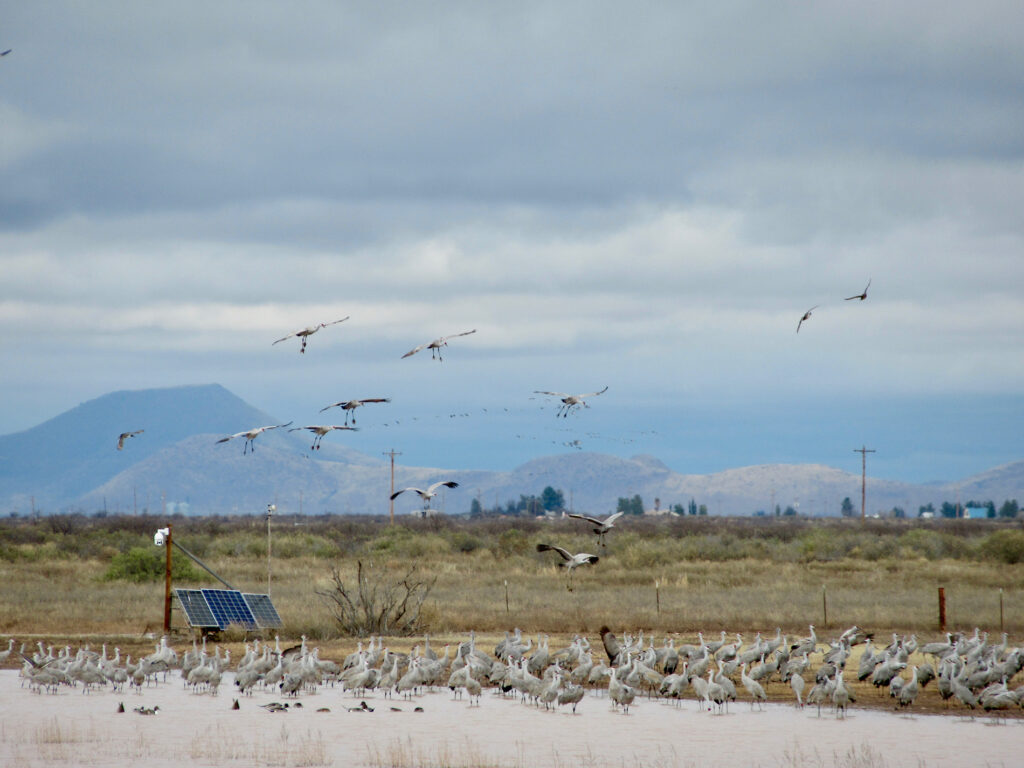
Check out Buenos Aires National Wildlife Refuge south of Tucson. This refuge was established for the reintroduction of masked bobwhite quail. The endangered Southwest willow flycatcher has been seen here in May and August and September. The threatened yellow-billed cuckoo has been spotted between June and August. Rufous-winged sparrows – USFWS-designated Bird of Conservation Concern for the Sonoran Desert Region – are found all year long.
If camping at Patagonia State Park – which is a birding hotspot of its own – be sure to check out the Paton Center for Hummingbirds in the nearby town of Patagonia.

Plan your birding adventures with our 2026 RV Trip Planner available in our Etsy Printables Shop!
The 18,444-acre Cibola National Wildlife Refuge – not far from one of our favourite boondocking sites in Kofa National Wildlife Refuge – recreates marshes, backwaters, and meanders that provide wintering grounds for migratory waterfowl. It also provides habitat for endangered species such as Ridgway’s Rail.
Another birding hotspot along the lower Colorado River to check out is Bill Williams National Wildlife Refuge– and it’s a fun paddle as well if you’ve brought a canoe or kayak with you.
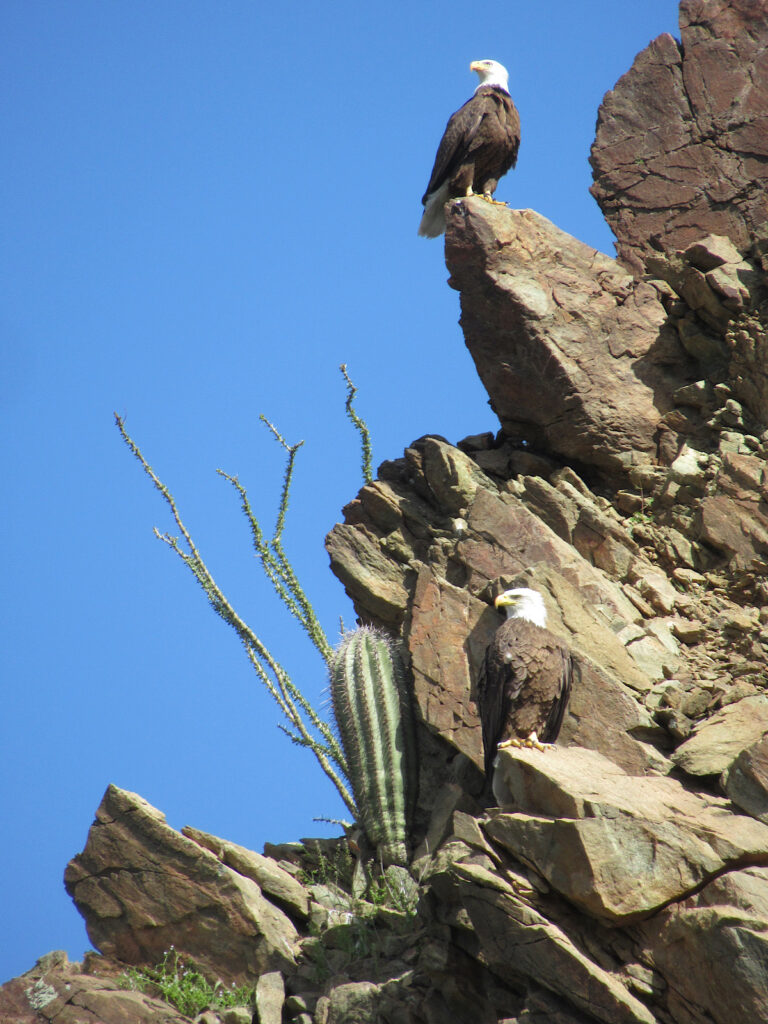
Check out Birding Hotspots for other locations in Arizona – or wherever you roll. It’s an excellent resource offering seasons of birding exploration!
A few final beginner birder tips
Spend time reading and getting familiar with your field guide. Look at the major groupings – you probably already know the difference between hummingbirds and raptors such as eagles, but what about the major difference within waterfowl and waders?
Take a course through a local park or bird sanctuary – it will help jumpstart the learning process.
Checklists of common birds are often available for free in most state and national parks. These lists are another shortcut that will help you with identification of the species you are seeing. You won’t find the exact same bird checklist in a desert environment such as Saguaro National Park that you will find in a “sky island” environment such as Chiricahua National Monument.
Found a bird feather? Another friend of mine recommended this cool app – Feather Atlas. Fill in a few facts such as color, patterns and size and it will identify the bird.
Consider setting up a suction cup hummingbird feeder on one of your RV windows. We did this in Roosevelt Lake one year and were amazed at who stopped by to visit! Want to make your own hummingbird syrup? Boil 4 cups water with 1 cup pure cane sugar until completely dissolved. Cool completely and fill feeder.
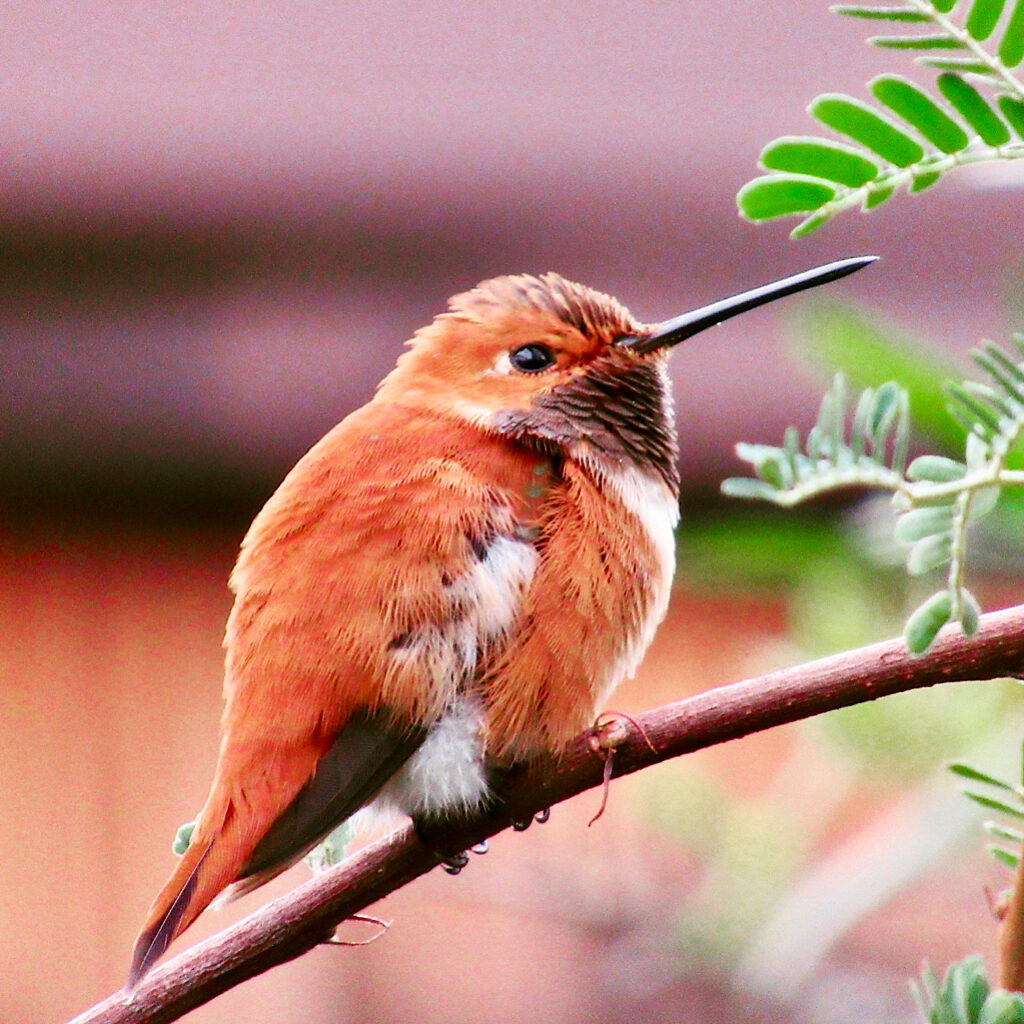
My biggest tip is just start watching the birds – wherever you are. Look, listen and learn.
P.S. Add Gilbert Water Ranch to your birdwatching bucket list!
Birding is the perfect hobby for winter wanderers in Arizona – simply get the gear, get outside, and get watching!
PIN THIS POST FOR FUTURE REFERENCE!
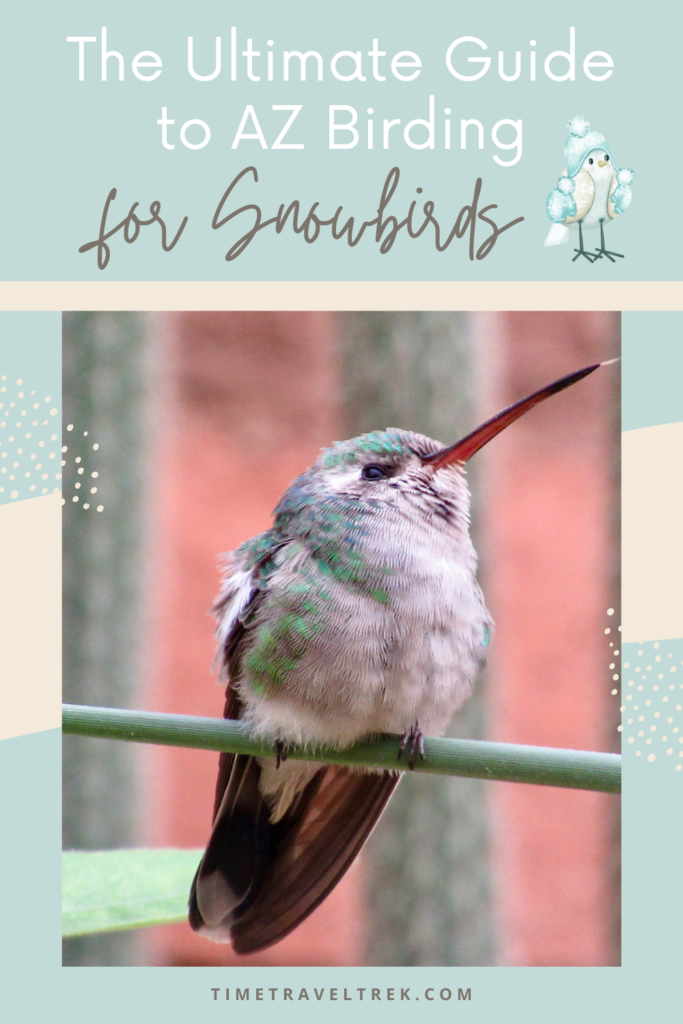
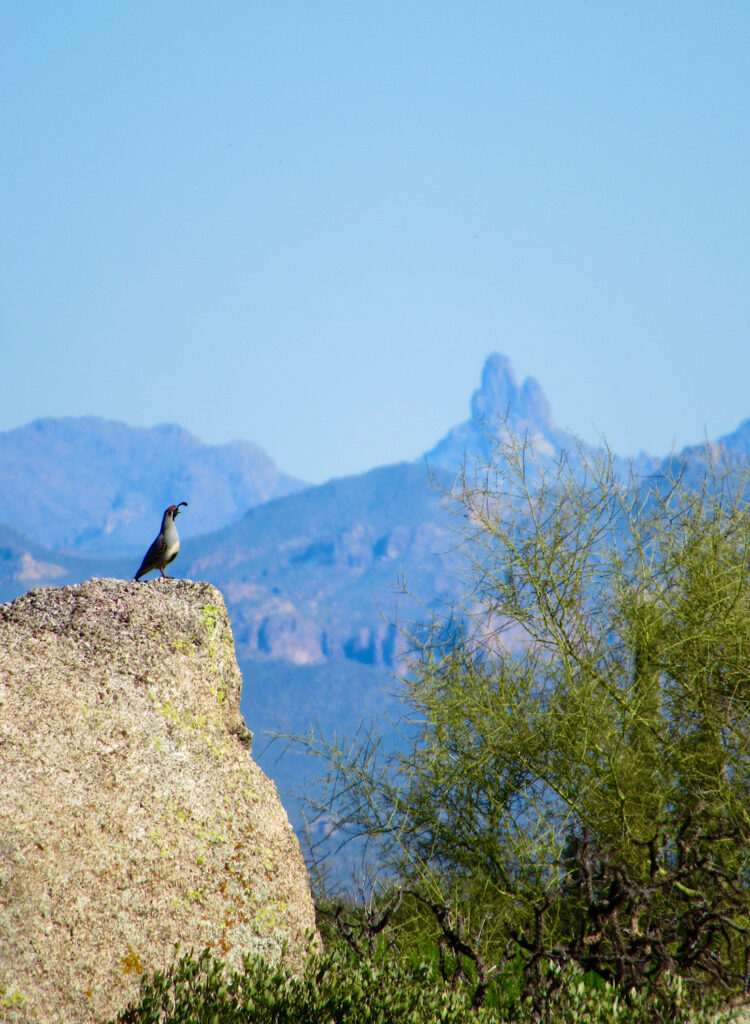
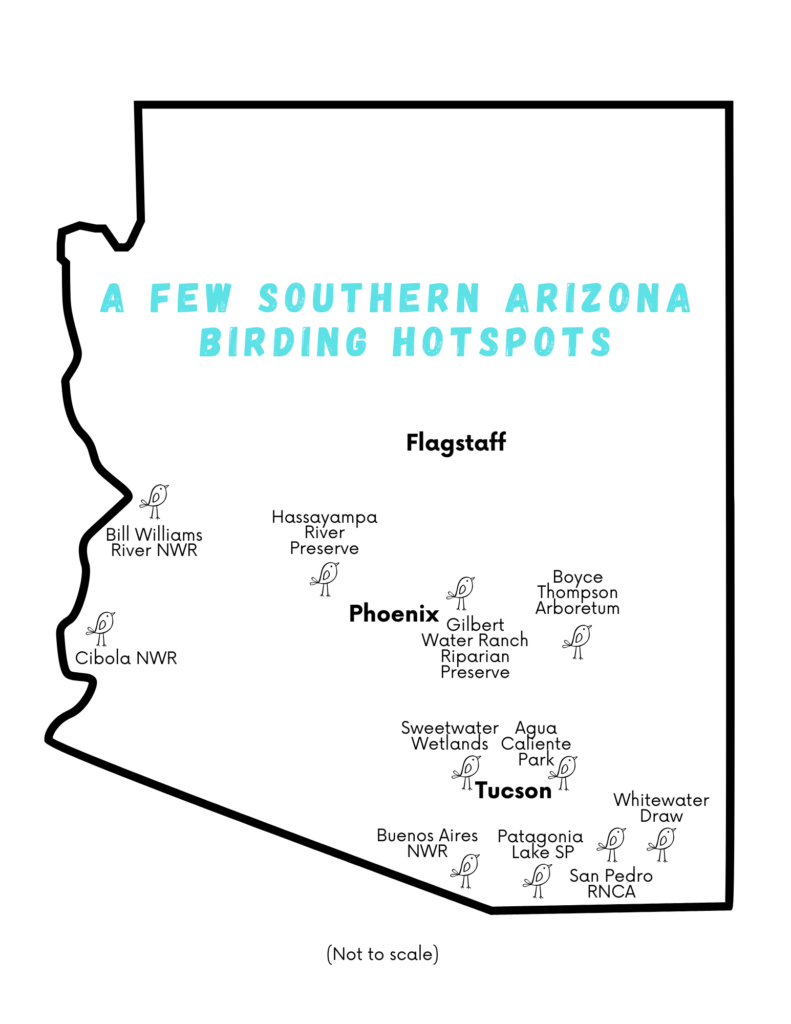
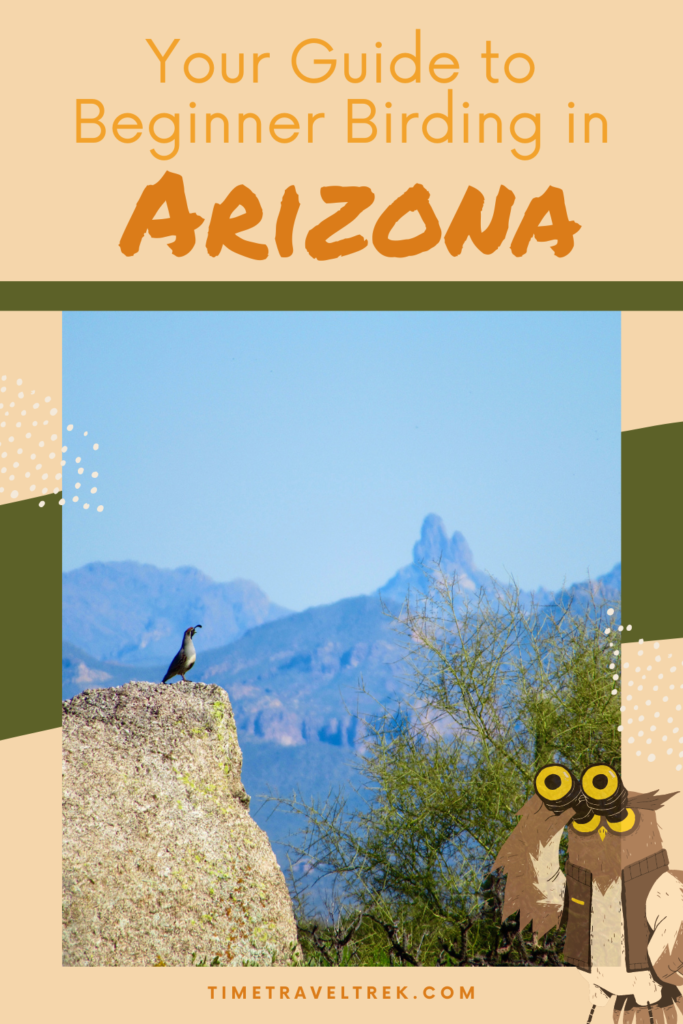
A map would be helpful to those of us who do not know Arizona but would like to go birding there.
Great idea Roxane! I will add a map as soon as I have time.
Map added with 11 Southern Arizona birding locations!